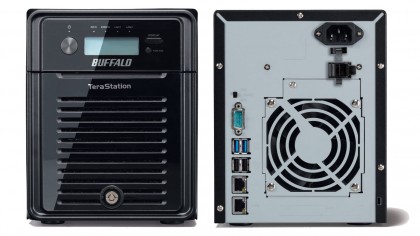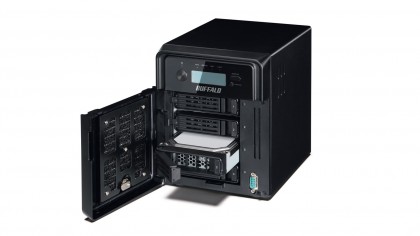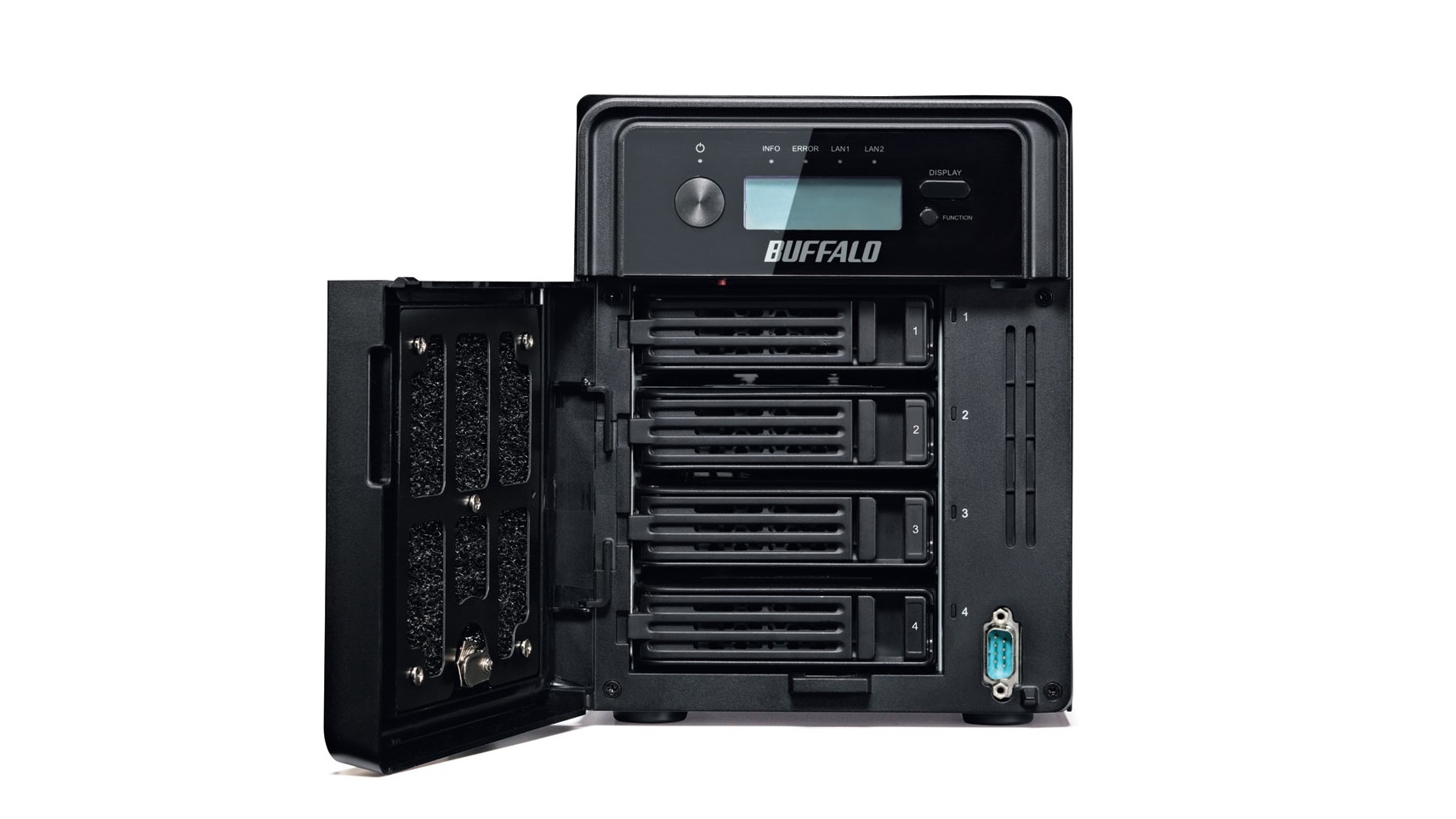Early Verdict
Pros
- +
Both simple and advanced interfaces with sensible defaults
- +
SMB 2 and iSCSI support
- +
Informative display
- +
UPS support
Cons
- -
Fewer advanced applications than the competition
- -
No eSATA
- -
Need a screwdriver to swap drives
Why you can trust TechRadar
Buffalo has been producing small business NAS devices for many years.
This compact four-bay unit is an interesting mix of traditional NAS options (like needing desktop software to configure the device) and new features like USB boot and iSCSI support (you can use it either as traditional network storage or directly attached to a server. It can be included as part of a storage fabric using tools such as Storage Spaces in Windows Server 2012).
We like the a handy screen on the front that shows you startup and diagnostic information, reminds you if you haven't plugged in an Ethernet cable and displays useful information like the IP address and link speed.
Twin Gigabit Ethernet ports and four USB ports give you link aggregation for improving performance and reasonable expansion options; two of the ports are USB 3 for speed, but you don't get the older high-speed eSATA expansion. On the other hand, there are UPS ports on the front and the back of the case.

Although you can take out the four drive cages without tools, you will need a screwdriver to remove or fit drives into the cages; many competitors have switched to more convenient tool-free mountings. The only cloud option is backing up to Amazon S3 and you don't get sync tools to run on your PC or Mac to keep files up to date when you're travelling. However, as well as the Apple Time Machine compatibility offered by many small business NAS devices these days you get ten licences for NovaBACKUP Business Essentials 14 that you can use to back up your office PCs. WebAccess means you can connect from any device with a decent browser, so you're not limited to Android and iOS (although there are mobile applications for those as well as Windows Phone). You can also use it as an FTP server for file access.
For many businesses, these simpler options will actually work out better. And while Buffalo suggests you install the TeraNavigator software to set up your TeraStation, if you type the IP address from the display on the front into your browser, you can log in to the NAS and configure it through the web interface instead. Sensibly, this prompts you to change the admin password straight away (and it helpfully gives you the device name to look for in Explorer as well).
This gives you the same interface as TeraNavigator, with the choice of the full admin control panel, which opens by default, or the Easy Admin interface which walks you through setting up WebAccess, backing the NAS up to an external USB drive or another TeraStation, search indexing, user and group management, RAID settings and changing the main password with helpful wizards.

If you're experienced at managing network storage you can jump straight in; if you don't know the difference between RAID 0, 1, 5 (the default if you have all four drives fitted) and 6, you get a good explanation to help you decide whether to stick with the defaults. You can even use the Easy Admin interface to join the TeraStation to your Active Directory so you don't have to set up users and groups all over again.
You can't switch to JBOD or iSCSI modes here, which is just as well; if you don't know how to set those up in the advanced interface, you should stick to RAID. Similarly, you have to use the full interface to enable backup to Amazon S3.
The interface doesn't have the clean, modern look of Netgear's new OS, but it's packed with useful touches. If you've tucked the TeraStation into a corner and you need help locating it (or you have more than one and you want to be sure you're swapping out the right hard drive), you can click an icon in the web interface that flashes the screen and plays a tune on the TeraStation you're working with. You can set up to three schedules for turning off power to the hard drives, if you don't need the NAS on overnight or at weekends. And the defaults are sensible; file services and SMB 2 are on by default, but remote access and support for offline files are off because not everyone will need them.
Verdict
The TeraStation 3400 might not be one of the most exciting NAS devices on the market, but it's very capable. File performance over the network is good and the interface gives you a choice of basic or advanced setup, and even the advanced setup is clear and well organized.
With an ARM processor rather than an Atom inside, the 3400 isn't as well suited to running more demanding applications and it doesn't have an app store for adding more features but you can use it to stream content (using DLNA or iTunes) and as a print, web or even MySQL server, or to collect video from IP surveillance cameras (although as usual, that requires extra licences). For a smaller office, being able to share a printer and host some web pages with office information could mean you don't need a full server. The TeraStation 3400 is flexible enough to work well on its own or with the server setup you already have.
Mary (Twitter, Google+, website) started her career at Future Publishing, saw the AOL meltdown first hand the first time around when she ran the AOL UK computing channel, and she's been a freelance tech writer for over a decade. She's used every version of Windows and Office released, and every smartphone too, but she's still looking for the perfect tablet. Yes, she really does have USB earrings.
What is a hands on review?
Hands on reviews' are a journalist's first impressions of a piece of kit based on spending some time with it. It may be just a few moments, or a few hours. The important thing is we have been able to play with it ourselves and can give you some sense of what it's like to use, even if it's only an embryonic view. For more information, see TechRadar's Reviews Guarantee.
